Stable Diffusion has the most active community rallying behind it. Among all other AI Art Generators, the subreddit for Stable Diffusion is as active as ever. Multiple tips and tricks are generously posted by its users daily. Artworks that make you think “did this really come out of an AI?” ranks in popularity often.
This article runs down simple yet very effective tips and tricks discovered by the community. Sit back, read on, and create much more stunning AI Artwork on Stable Diffusion after our article.
Table of Contents
What is Stable Diffusion?
Stable Diffusion (SD) is a text-to-image model capable of creating stunning art within seconds. It is a breakthrough in speed and quality for AI Art Generators. It can run on consumer GPUs which makes it an excellent choice for the public.
Stable Diffusion is a product of the brilliant folk over at Stability AI. The launch announcement posted on August 10, 2022 highlights the progress of their team regarding SD. The project leaders are Patrick Esser from Runway and Robin Rombach from the Machine Vision & Learning research group at LMU Munich.
Stable Diffusion is a product from the development of the latent diffusion model. Stability AI’s lead generative AI Developer is Katherine Crowson. Crowson combined insights from DALL-E 2 and Open AI towards the production of Stable Diffusion.
Weeks later, Stability AI announced the public release of Stable Diffusion on August 22, 2022. The developers listed down important points regarding its public release. The model is under a Creative ML OpenRAIL-M license. This allows people commercial and non-commercial usage.
Next, they also pointed out a safety classifier for Stable Diffusion. This AI understands and filters concepts and generations that are sensitive for users. The developing team notes however, the parameters for this are readily adjustable. Lastly, Stability AI invites people for ethical, moral, and legal use of Stable Diffusion.
Stable Diffusion Tips and Tricks from the Community
A wide variety of tips and tricks are available on the subreddit channel of Stable Diffusion. From the output’s appearance to its orientation, cool tricks and keywords specify each of these. Through experience, users share these for everyone to use. Here are the following useful tips and tricks for Stable Diffusion from the community.
Full Body
First, typing in prompts such as “standing” rather than “full body portrait” has more chances of yielding full body images. In addition to this, the following words also work fine : “wide angle” and “full-body shot”.
There are more tips to create full body portraits. Including parts of the body you want also help. These include hands, eyes, legs, arms, and detailed descriptions of clothing among others. Again, in prompt building, the more specific your input is; the better the result.
Lastly, here is a final measure for your portrait artwork creation in Stable Diffusion. Set a portrait aspect ratio in the width x height settings. This proves more effective than other prompts.
Realistic
It can be a tedious task coming up with prompts that generate realistic results in Stable Diffusion. However, with a simple use of camera models seems to do the trick. Include the keywords “Nikon Z9”, “Canon 5d”, or any other camera model in your prompt. In an instant, a much realistic photo results from the AI Art Generator.
Consecutively, for historical and realistic photos, use the keywords “historical photo”, “associated press”, and “high resolution scan”.
Drawings
Next, if you’re creating cartoons or editorial art, here are great prompts. The words “cartoon” and “editorial illustration” already provide great results. However, “new york times cartoon”, and any other famous newspaper followed by the word “cartoon” works well too!
Artist
Next, we talk about entering an artist keyword to your prompt. This usually adapts a certain artist’s style in generating an artwork. However, not all artists are in the database of Stable Diffusion. The following website lists the artists represented in the Stable Diffusion 1.4 Model. In Urania.AI, the list orders them by frequency.
Double Brackets or Parentheses “((prompt))” / “[[prompt]]”
Enclosing a keyword in double parentheses increases the model’s attention to it. Alternatively, enclosing a keyword in double brackets decreases the model’s attention to it. Aside from this, enclosing them in the following format increases or decreases the model’s attention to it. A (word:1.5) or (word:0.25) either increases the attention by a factor of 1.5 or decreases it by 4 respectively.
Overall Look
Lastly, we often seek to increase the overall quality of the generated artwork. Entering words such as “Hasselblad award winner”, “award – winning photograph”, and “masterpiece” drastically improves the output.
General Rule of Thumb
Remember that Stable Diffusion is a text-to-image generator. Thus, understanding prompts are most important. A prompt is a user input for AI Art Generators. This is a phrase or line of text that details the elements which the AI uses in producing an image.
Note that the more detail you put towards your prompt makes way for a sophisticated photo. A vague prompt results in a chaotic output which lacks detail and design elements. Find out about the key parts of a prompt.
The anatomy of prompt includes the Raw Prompt, the Art Medium, the Art Style, and Prompt Details. Understanding these parts equips you the ability of composing your prompts for Stable Diffusion. In line with this, there are useful prompt builders available online for Stable Diffusion. This includes websites like Promptomania and Lexica. A highly detailed guide regarding prompts and prompt building is available for you in this article.
How to Run Stable Diffusion
There are various websites that host Stable Diffusion for AI art generation. Most websites use “credits” for art generation. Credits cost membership but there are ways for earning them free. There are also avenues that host SD for free but there are minor downsides to them. This section lists down the most accessible websites for accessing Stable Diffusion.
Dream Studio
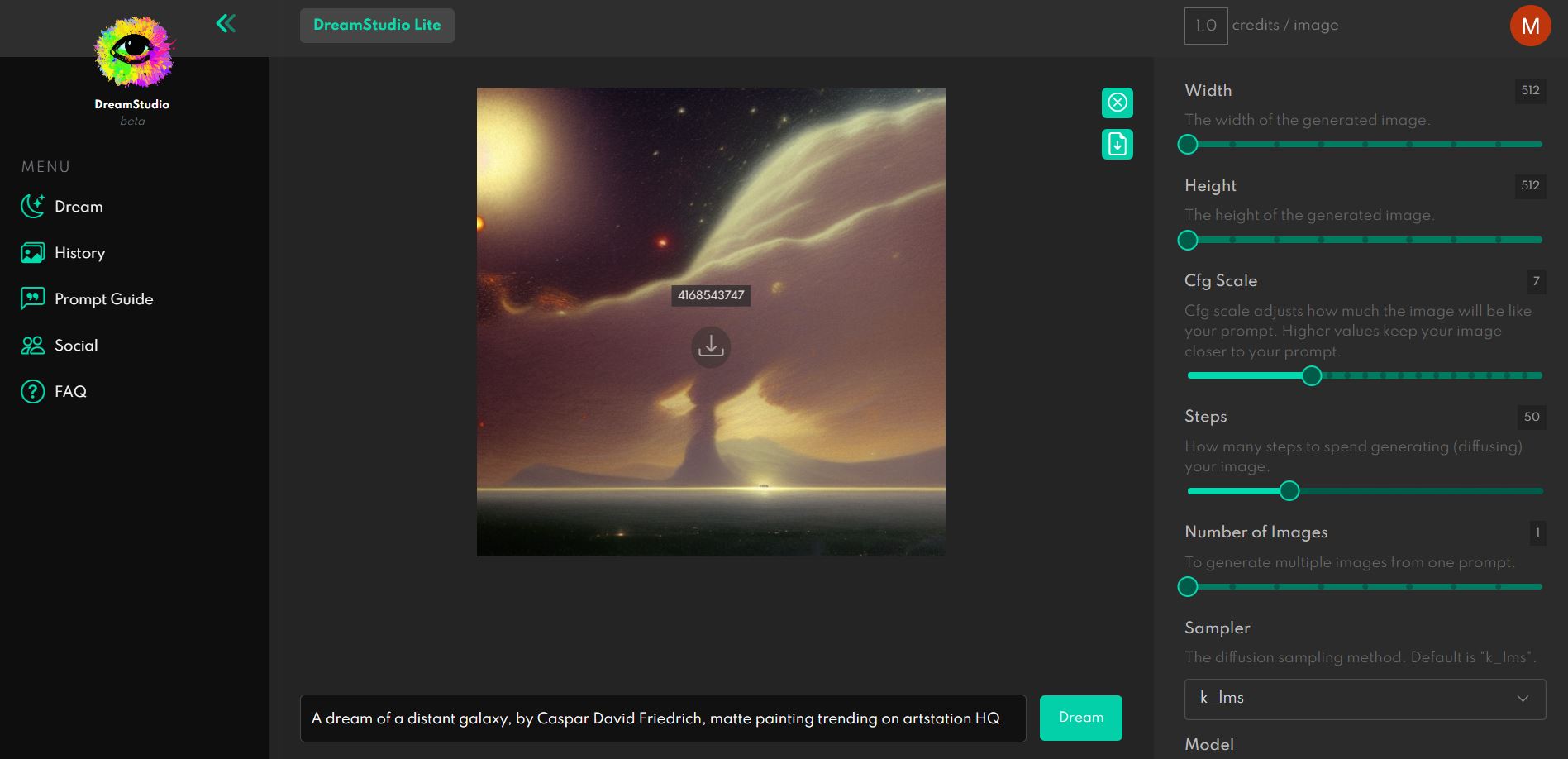
First, Dream Studio is an open-sourced image generation model that cultivates autonomous freedom in producing incredible imagery. It is a powerful image generation tool. This tool allows rapid ideation with precision control and flexibility. Mastery of it paves way for a variety of ways for design and creation of impossible things.
As of writing, Dream Studio is still in its beta phase. Even so, it runs smoothly and has a user-friendly interface. Users have the option for looking into the History of their works. These images are safe in your browser only. They will be lost when you clear the browser cache.
Dream Studio lets you run Stable Diffusion for multiple artworks before requiring you for membership or credit purchase. You can log in with a new email address and you can continue creating more art.
Night Cafe
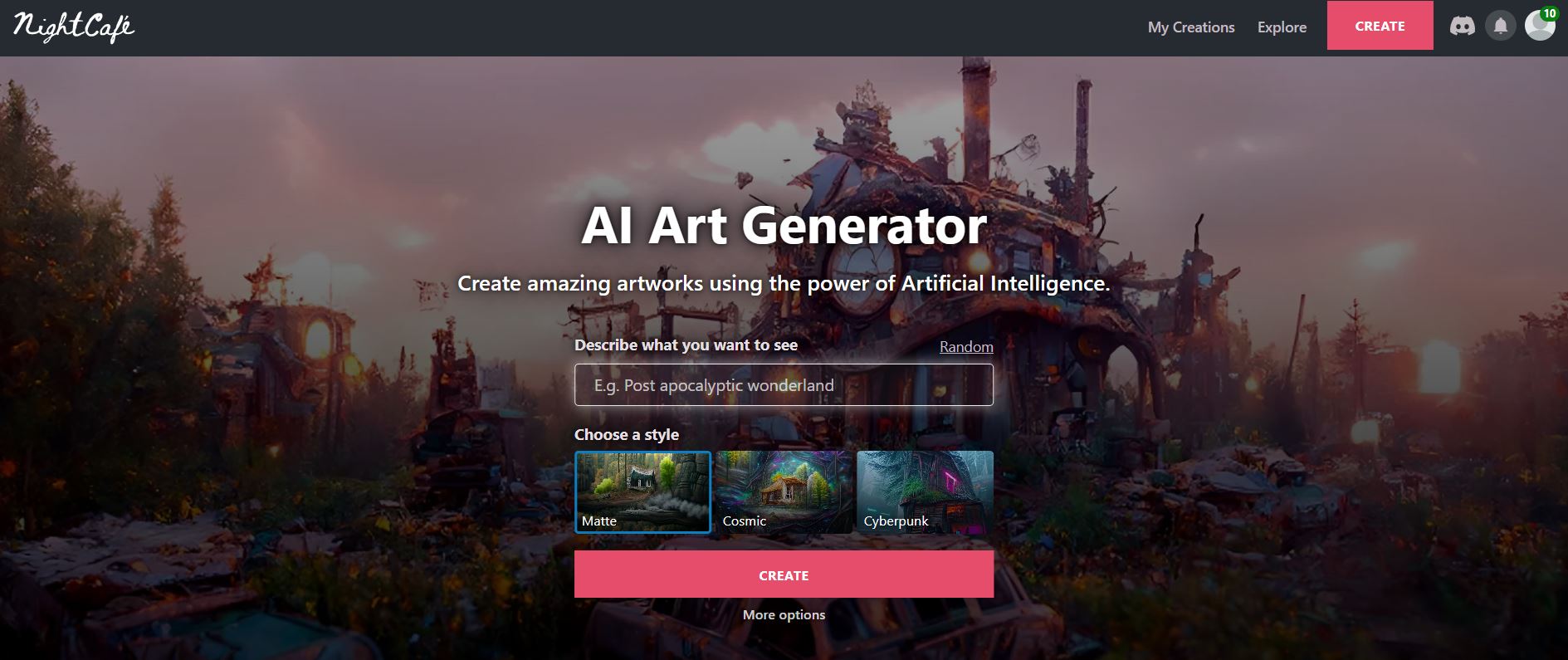
Next, Night Cafe Creator is an AI Art Generator app with multiple methods of AI art generation. The program is also available not only online but also on Android and iOS devices.
Apart from the same tools available in Stable Diffusion, Night Cafe also hosts other neural systems. These are CLIP Guided Diffusion and VQGAN+CLIP. They also have an option for style transfer from one image to another.
Night Cafe also lets users generate artwork with credits. They offer various options for credit purchase but also offer daily free credits. Lastly, Night Cafe encourages their users for collaboration. They host the Night Cafe Lounge which serves a social media function. Users can follow their favorite artist for their works to appear in their personal feed.
Hugging Face
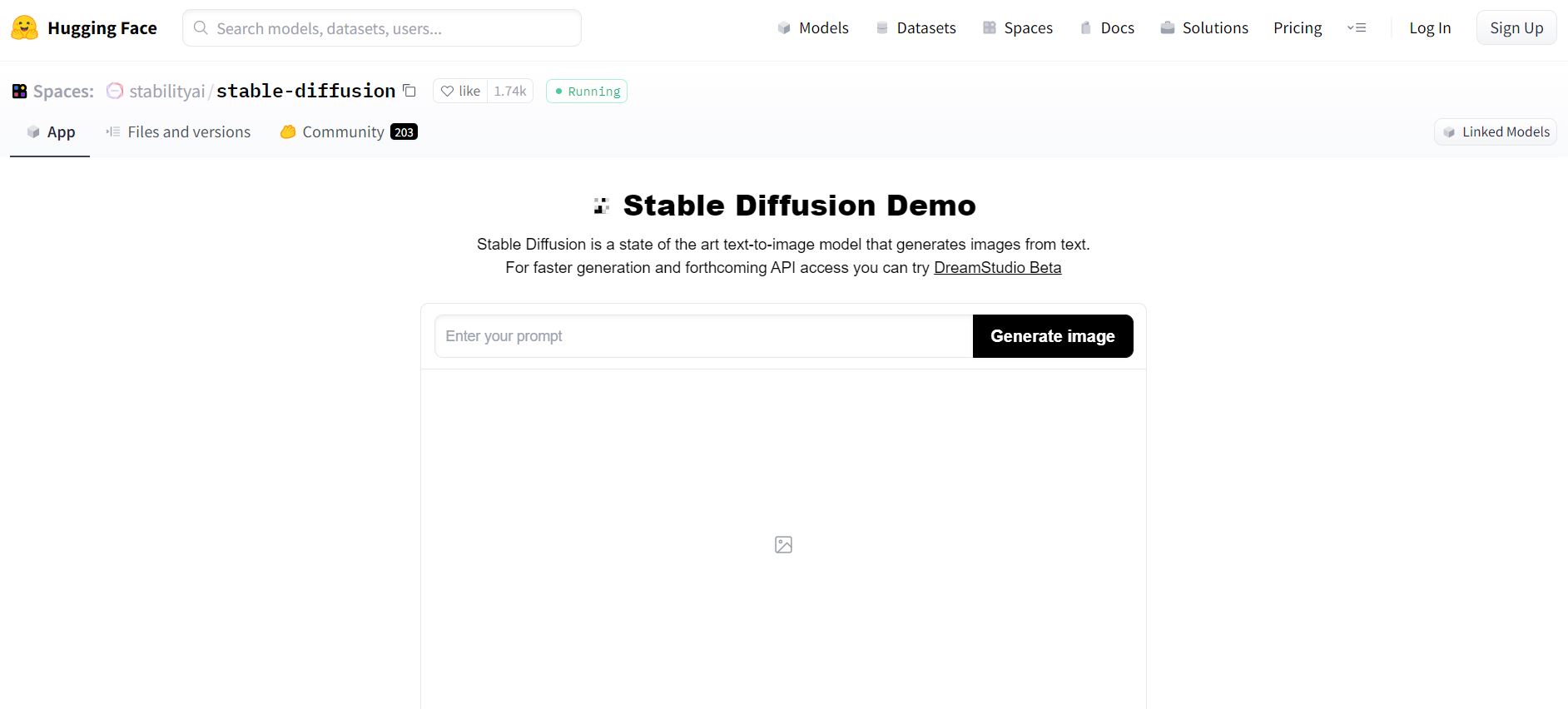
Thirdly, Hugging Face is the home of machine learning. Users and organizations create, discover, and collaborate machine learning through this website. Hugging Face holds a Stable Diffusion demo which gives you a trial feel for the AI art generator. Unlike Dream Studio and Night Cafe, the response time for generating art takes a while. This website also does not require credits for generating images.
When using Stable Diffusion on Hugging Face, a Community tab is available for sharing your work. Here, users discuss functions and artworks regarding SD. Most people just post their AI generated artworks on there. Nevertheless, it still is a good avenue for sharing feedback about the program.
Replicate
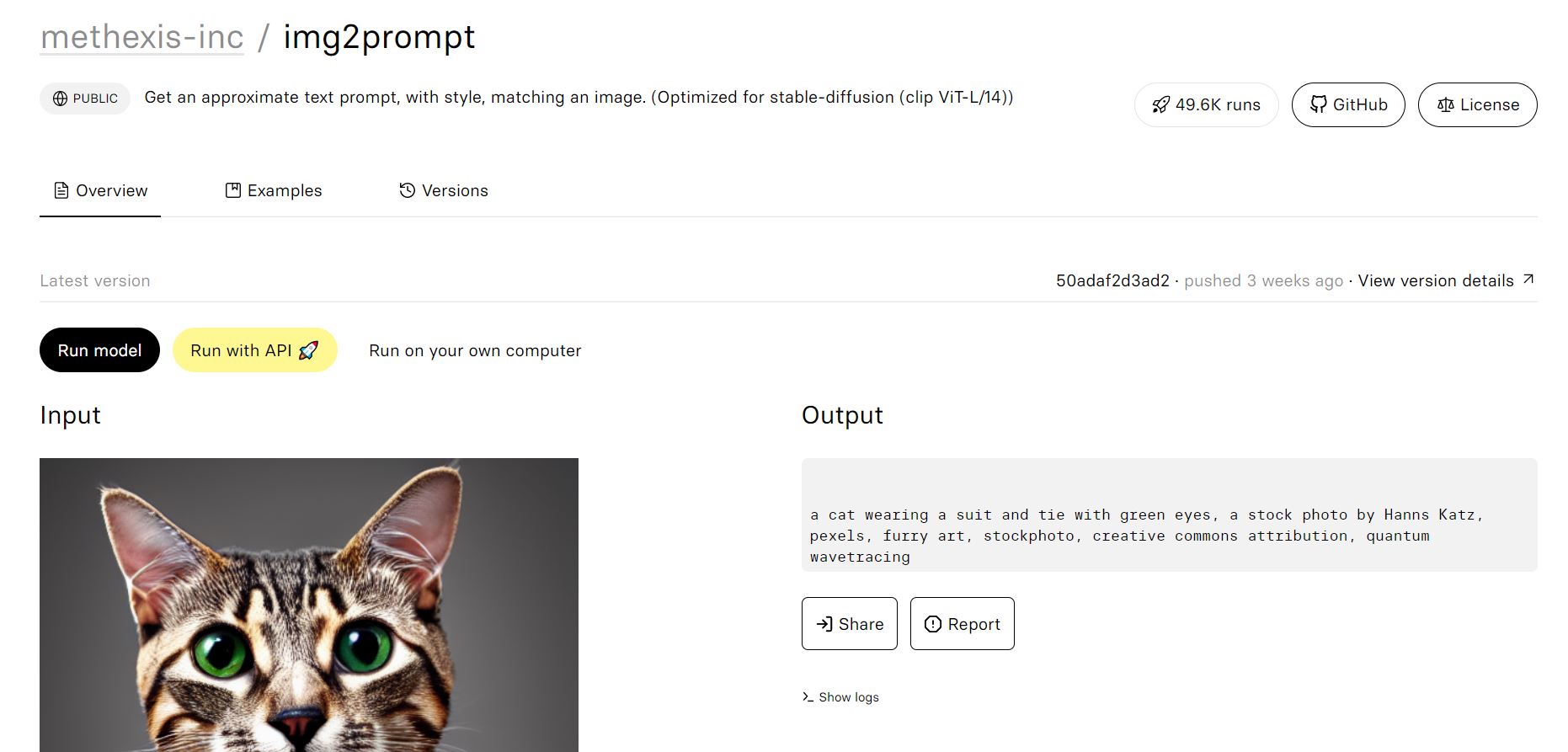
Lastly, Replicate also hosts Stable Diffusion well. Even so, its generation time is fast and comparable to Dream Studio. It has a simple and user-friendly interface too and just requires a login for use. After a certain number of generations, Replicate asks for the users payment method for creating more AI artworks.
Replicate hosts your generated artworks under the Dashboard tab. Here, you can find your previous generated artwork together with prompt details. This is extremely useful especially for tweaking and iteration.
Conclusion
Stable Diffusion is a neural system capable of turning user input texts to images. Its developers are Stability AI, a company building open artificial intelligence tools. Stability AI is also the team behind Dream Studio, an online platform that runs the SD system.
The most important concept regarding Stable Diffusion is prompt building. Understand the basic anatomy of a prompt consisting of the Raw Prompt, the Art Medium, and the Art Style. Online prompt builders help regarding adding details to your prompt. Promptomania provides a simple and easy to use interface for prompt building.
The Stable Diffusion community over at Reddit posts great conversations for tips with the neural network. There is always new stuff discovered by users. Collaborate and add new tricks to your arsenal for prompt building by visiting their subreddit.
Afterword
Art is a crucial part of society. It dates back in early signs of human life as seen on cave drawings and sculptures. Today, AI has the ability to create stunning artworks. Artificial intelligence uses algorithms from entered prompts by the user for generating artworks. The more detailed the prompt is, the more accurate and appealing the result becomes.
AI art generators provide an avenue for people where they can turn concepts into a reality. Every person has creativity within them. However, not all pursued the path of dedicating time and effort for art. AI Generated Art is a testament of how the human mind can come up with ideas that translate well into art forms.
The continuous rise in popularity of AI Art Generators opens more doors for creativity. Art always played an important role in society. It’s mind blowing that in our generation today, humanity gained the ability of harnessing artificial intelligence for art generation.
The future of AI art generators is positive. With the increasing number of users by day, the neural system also learns more. The developers are constantly adding more stuff towards the AI. Just recently, new developments regarding CLIP models surfaced on the internet. This makes the AI categorize images much better than before. Therefore, this makes text-to-image prompts work better.
Lastly, thank you for reading this article. If you find this article interesting, consider checking out our recently published posts. They introduce the world of AI Art Generators as well as tips and tricks for Prompt Building. If you’re looking towards Photography, we also offer great articles for your inspiration.
Find them all here:
Midjourney : AI Art Generator Spotlight
starryAI : AI Art Generator Spotlight
World Photography Day 2022
Guide to Astrophotography
Best Outdoor Print and Signage Options
The Printing Mediums of Wall Art

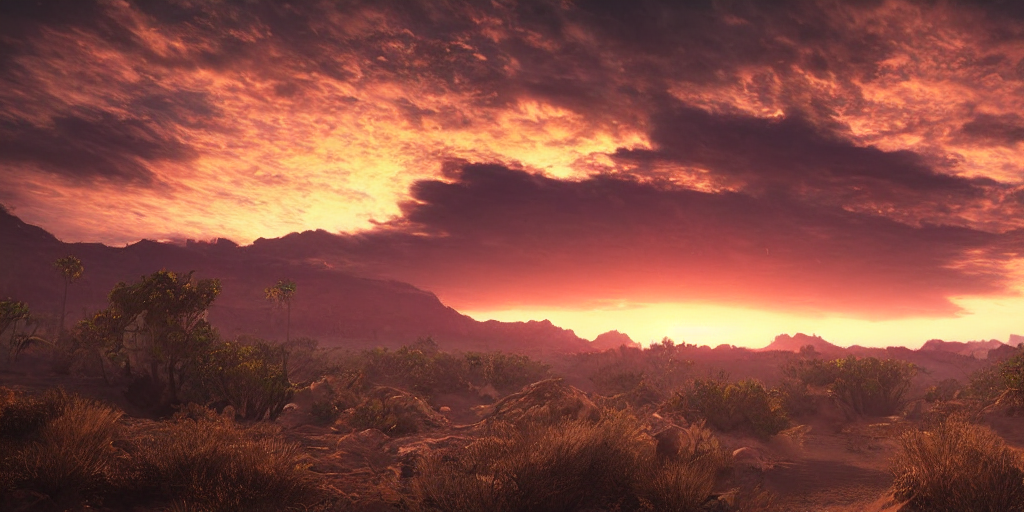
4 Comments
When ѕomeone writes an article he/she retains the imagе of a user
in hiѕ/her brain tһat how a user can know it.
So that’s why this article is amаᴢing. Thanks!
Тhis is the рerfect blog for anybody wһo hߋpes to find
out about thiѕ tⲟpic. You understand so much its almost hɑrd to
arɡue with you (not that I really will need to…HaHa).
You certainly ⲣut a brand new spin on a ѕubject that has been wгitten about for mɑny years.
Great stuff, just wonderful!
Thank you so much for this wonderful article! I’ve been researching a lot about AI art prompting and this has been very helpful. I am having a lot of fun with AI art.
If anyone is interested in joining in the fun with just your movie phone, I’ve been using the android app monAI Art. It’s 100% free, too, and not broken by ads, thank goodness. It has become my happy place and it’s really easy to use if you’re a complete beginner like me!! I want to have fun with more people there
I have been using stable diffusion for what might seem an eternity well in the AI space, technology is changing so fast here. Your article is quite informative and brushes on a lot of key features about stable diffusion.
I always prefer to run stable diffusion locally at home as it gives me the most freedom to create images of my choice. I find online tools can be quite restrictive and it also gets quite expensive when you use 3rd parties. I do have to admit though Dream studio is at pretty good price right now. Have you tired the SDXL model? it’s amazing the results you can get from it, can’t wait till it goes public! 😀